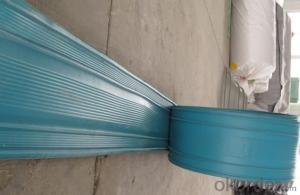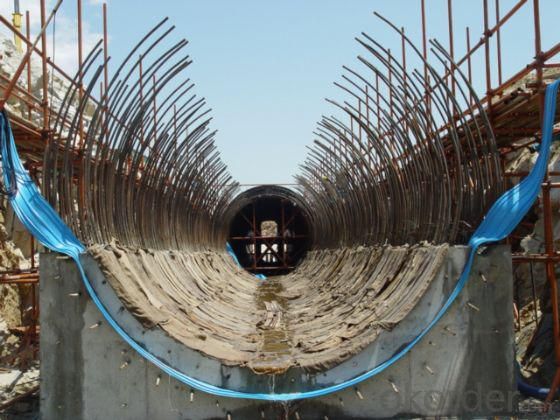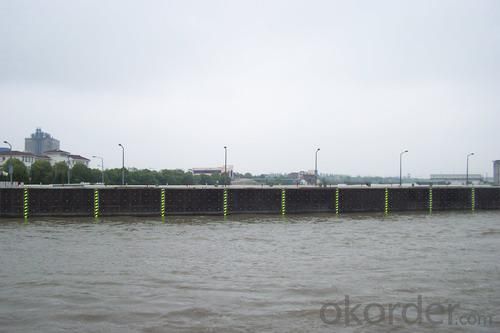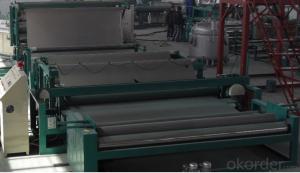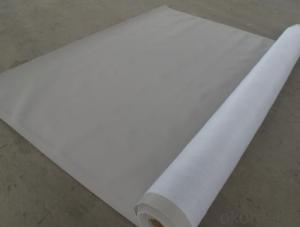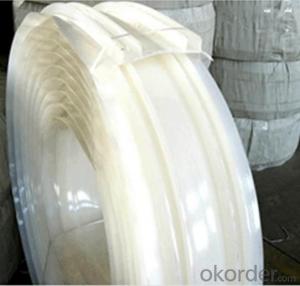PVC waterstops
- Loading Port:
- China Main Port
- Payment Terms:
- TT OR LC
- Min Order Qty:
- -
- Supply Capability:
- -
OKorder Service Pledge
OKorder Financial Service
You Might Also Like
Products Description
PVC,EVA waterstops is made of high grade polyvinyl chloride and features unique design and advanced
process. It is applicable for various joints during construction and use. Simple use and easy combination
in construction site.
Products Specification
Thickness :1.0-4 .0 mm
Width :15-30CM
Length: 20M
Features
● PVC, EVA waterstops for sealing construction and expansion joints of reinforced concrete (expansion joint),
placed in the concrete water stop, across and close the gap, forming a solid watertight seamless screen, to
prevent fluid flow through .
● PVC, EVA waterstops with a variety of different shapes, such as middle and external design, in any ground
or underground construction, the formation of a long and solid watertight network, especially for water and
retaining the the structure.
Physical Properties
Items |
| ||
Hardness(A) |
≥80±5 | ||
tensile strength MPa
|
≥13 | ||
Elongation,%
| ≥300% | ||
tear strength KN/m | ≥25 | ||
brittleness temperature ℃ |
≤-30 | ||
|
| ||
|
| ||
Installiton
PVC water stop rubber water stop with the same installation method. When buried in the poured concrete interface
to make it fit with the flat part of the adhesive fastening joints, buried in the process of pouring the power to appropriate
the full vibrating the concrete, making it a good combination with concrete, in order to obtain the best sealing effect .
Application Range
Different shapes of PVC,EVA Waterstops centrally and extermally placed allow lasting watertight seals in any grades
of construction design. They are typically used in water retaining and excluding structure, such as reservoirs, sewage tanks,
dams, pools, basements,subway, tunnels retaining walls, etc.
- Q: Are waterproofing membranes resistant to frost damage?
- Yes, waterproofing membranes are designed to be resistant to frost damage. They are typically made from durable materials that can withstand freezing temperatures without cracking or deteriorating.
- Q: What are the benefits of using a waterproofing membrane?
- The benefits of using a waterproofing membrane include protecting the structure from water damage, preventing leaks and seepage, extending the lifespan of the building, reducing maintenance and repair costs, and creating a healthier and more comfortable environment by preventing mold and mildew growth.
- Q: How thick should a waterproofing membrane be applied?
- A waterproofing membrane should typically be applied to a thickness of at least 1.5mm to ensure effective protection against water infiltration.
- Q: How does a waterproofing membrane handle construction vibrations?
- A waterproofing membrane is designed to handle construction vibrations by providing a durable and flexible barrier that can withstand the movement and impact caused by these vibrations. The membrane is typically made of materials such as rubberized asphalt or synthetic polymers, which have excellent elasticity and tensile strength. When construction vibrations occur, the waterproofing membrane absorbs and dissipates the vibrations, preventing them from affecting the structural integrity of the building or compromising the waterproofing system. The flexibility of the membrane allows it to stretch and contract, accommodating the movement caused by vibrations without cracking or tearing. Additionally, some waterproofing membranes have added features like reinforced layers or fabric reinforcement, which further enhance their ability to withstand construction vibrations. These reinforcements provide additional strength and stability to the membrane, making it more resistant to damage from vibrations. It is important to note that the effectiveness of a waterproofing membrane in handling construction vibrations also depends on the quality of installation. Proper installation techniques, including adequate surface preparation and appropriate adhesion methods, ensure that the membrane is securely attached to the substrate, minimizing the risk of displacement or damage during construction activities. In summary, a waterproofing membrane is specifically designed to handle construction vibrations by absorbing and dissipating the impact, while maintaining its integrity and waterproofing capabilities. The flexibility and strength of the membrane, along with proper installation techniques, ensure that it can withstand the challenges posed by construction vibrations and provide long-lasting protection against water intrusion.
- Q: Can a waterproofing membrane be used in conjunction with energy-efficient building designs?
- Yes, a waterproofing membrane can be used in conjunction with energy-efficient building designs. In fact, incorporating a waterproofing membrane into the construction of an energy-efficient building can provide several benefits. Firstly, a waterproofing membrane helps to protect the building envelope from water infiltration, which is critical for maintaining the integrity and longevity of the structure. By preventing water damage, the building can avoid costly repairs and potential energy losses caused by moisture intrusion. Additionally, a well-designed waterproofing system can contribute to the energy efficiency of the building by reducing the need for mechanical heating and cooling. By preventing moisture from entering the building envelope, the waterproofing membrane helps to maintain a consistent indoor temperature, reducing the load on HVAC systems and improving energy efficiency. Furthermore, certain types of waterproofing membranes, such as those with reflective or heat-resistant properties, can also contribute to energy savings by reducing heat transfer through the building envelope. These membranes reflect solar radiation, reducing the amount of heat absorbed by the building, and thus decreasing the demand for cooling. Lastly, waterproofing membranes can be integrated with other energy-efficient building components, such as green roofs or rainwater harvesting systems. These systems can help to further reduce energy consumption by providing insulation, reducing stormwater runoff, and promoting sustainable water management practices. Overall, incorporating a waterproofing membrane into an energy-efficient building design can enhance both the durability and energy performance of the structure. It offers protection against water damage, reduces the load on mechanical systems, and can be integrated with other sustainable features, making it a valuable component of energy-efficient building designs.
- Q: Can waterproofing membranes be used on utility manholes?
- Utility manholes can indeed benefit from the use of waterproofing membranes. These specialized membranes are specifically engineered to create a barrier against water infiltration, making them perfectly suited for areas where water is present, such as manholes. To prevent any potential damage to the structure or the utilities within, these membranes are typically applied to the walls and floors of the manhole, effectively preventing water from seeping through. This process not only maintains the integrity and functionality of the utilities, but also helps to avoid water-related issues like corrosion, leaks, and material degradation. Furthermore, waterproofing membranes offer additional protection against elements such as chemicals, gases, and soil contaminants that may be found in or around the manhole. Thus, the application of waterproofing membranes on utility manholes is a widely adopted practice to guarantee their long-term durability and functionality.
- Q: Can a waterproofing membrane be used in conjunction with a drainage system?
- Using a waterproofing membrane alongside a drainage system is indeed a viable option. In fact, it is frequently advised to employ both simultaneously to achieve optimal waterproofing and drainage results in spaces like basements, roofs, and foundations. The waterproofing membrane serves as a shield against water infiltration, while the drainage system effectively eliminates any surplus water build-up. Through the integration of these two systems, a comprehensive solution is guaranteed to safeguard the structure against potential water-related harm.
- Q: Can a waterproofing membrane be applied over existing waterproofing layers?
- Yes, a waterproofing membrane can be applied over existing waterproofing layers. However, it is important to assess the condition of the existing layers to ensure they are sound and can provide a proper substrate for the new membrane. Additionally, proper surface preparation and compatibility between the existing layers and the new membrane should be considered to ensure a successful and long-lasting waterproofing system.
- Q: Can a waterproofing membrane be used in elevator pits or sump pits?
- Yes, a waterproofing membrane can be used in elevator pits or sump pits. Elevator pits and sump pits are prone to water infiltration, and a waterproofing membrane can effectively prevent water from seeping into these areas. The membrane acts as a barrier, preventing any water from entering the pit and causing damage to the elevator or pumping system. This helps to maintain the integrity of the elevator or pump and prolong its lifespan. Additionally, a waterproofing membrane can also protect the surrounding structures and prevent any water damage. It is important to select a suitable waterproofing membrane that is designed for below-ground applications and has the necessary properties to withstand the specific conditions in an elevator or sump pit.
- Q: Can a waterproofing membrane be used on roofs with solar panels?
- Yes, a waterproofing membrane can be used on roofs with solar panels. In fact, it is highly recommended to use a waterproofing membrane in such cases to ensure that the roof remains watertight and protected from any potential leaks. The waterproofing membrane acts as a barrier that prevents water from seeping into the roof structure and causing damage. It is important to choose a waterproofing membrane that is compatible with the solar panels and does not interfere with their performance. Additionally, proper installation techniques should be followed to ensure a seamless integration of the membrane and solar panels.
Send your message to us
PVC waterstops
- Loading Port:
- China Main Port
- Payment Terms:
- TT OR LC
- Min Order Qty:
- -
- Supply Capability:
- -
OKorder Service Pledge
OKorder Financial Service
Similar products
Hot products
Hot Searches
Related keywords
